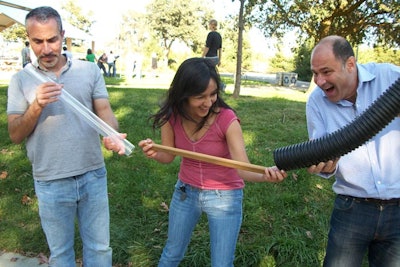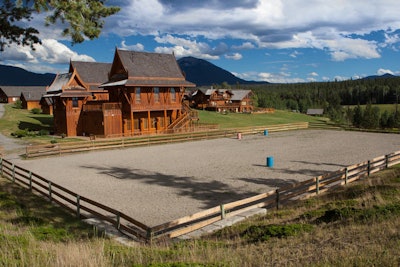A corporate retreat provides a chance for team members to get away from office distractions, work through concerns, and focus on the future of the company. But arranging one shouldn’t be more work than it’s worth. To help, meeting facilitators and planners share their tips for organizing and executing productive group outings.
1. Develop partnerships among vendors.
All the elements involved with putting together a retreat—from transportation to venues to catering to speakers—can feel like different pieces of a puzzle. Rebecca Tilley, managing director of Adventure Associates, which offers corporate leadership training courses and global teambuilding programs, suggests building a strong team of vendors and empowering them to communicate with one another. “When planning a retreat, it is advantageous to have all the vendors communicate and collaborate, as timing and smooth transitions ensure success,” she says.
2. Set and share goals.
Tilley also recommends developing clear objectives for the retreat and committing to them in a clearly focused agenda.
Once goals are set, fill in the venue team. “Make sure the goal for your retreat is clear and all participants are aware—are you working on teambuilding, customer relations, or a specific project? Start with your goal, and we help you tailor your retreat schedule from there,” adds Kerstin Auer, social media and marketing manager for Echo Valley Ranch & Spa, located in British Columbia.
3. Schedule free time.
Make sure there is a balance of activities, says Bruce Withrow, founder of Ontario-based Meeting Facilitators International, whose company has facilitated hundreds of corporate retreats. “Not everything needs to be programmed. If it’s a multiday event, the participants often appreciate an evening off so they can do their own thing and have a little down time.”
Venues should have space for informal discussions, says Joyce Bromberg, vice president of innovation and design for New York-based Convene, which provides conference spaces and integrated services for off-site meetings. “There should be places for casual conversation, perhaps even a space to share a drink, a cocktail, a cup of coffee.”
Corporate retreat planners could even consider unplugging for the weekend. “The most effective teambuilding retreats happen offline,” Auer says. “At Echo Valley, we offer different levels of connectivity, from fully connected via Internet to full digital detox without cell service, Internet, or TV.”
4. Consider meeting floor plans.
The setup of the meeting room matters, says Withrow, who prefers a U-shaped table with coffee service in the room. “The last thing you want is a crowded meeting room where people can’t get around the table.” Bromberg agrees, adding, “I think that they need to consider unobtrusive service that doesn’t take away from the meeting or get in the flow of the meeting.”
5. Get tech ducks in a row.
“One of the things that I suggest when looking for a retreat is privacy, the ability to have a secure location and secure Internet, and also technology that is not going to fail,” Bromberg says. She also suggests recording talks, meetings, and activities and then getting help editing the footage so the information can be useful post-retreat. Auer adds: “Let us know in advance which tech gadgets like projectors and collateral like flip charts you will need to ensure a seamless retreat experience.”
6. Plan a group activity.
Some groups might want to participate in a teambuilding activity during the retreat to build camaraderie and relationships. “There’s the opportunity to make it a memorable event, something that people will remember and a way to create a shared experience,” Bromberg says, suggesting activities like a cooking class with a shared dinner, a bourbon tasting, a wine tasting with a chocolate pairing, or even a congratulatory champagne toast.
And lean on the team at the venue for help with planning any activities. “If they’re going to go with some sort of structured teambuilding activity, I would work closely with the venue to see what works in that area. Someone far away might have a hard time accessing what that is,” Withrow explains. “No venue worth its salt is going to recommend something that isn’t appropriate for a corporate audience.”
At the same time, teambuilding and icebreakers might not be a priority for every single group. “If this is the senior team and they’ve worked together for five years, you don’t need an icebreaker,” Winthrow says. “It’s a complete waste of time.”





















